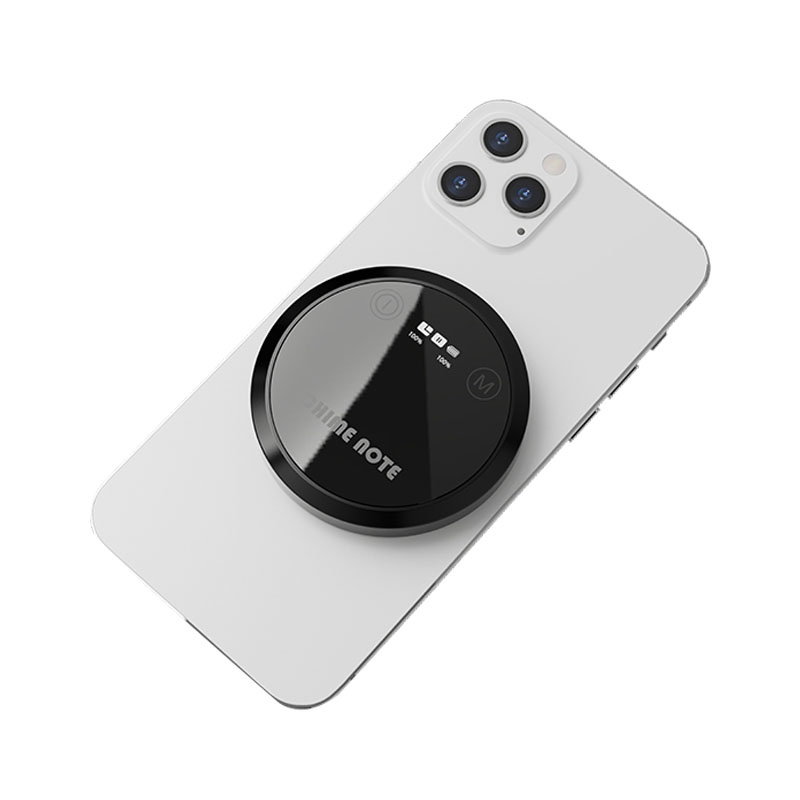Does AI Voice Recorder have intelligent noise reduction during recording?
Release Time : 2025-08-28
In modern information recording scenarios, recording devices have evolved from simple audio capture tools to intelligent information processing terminals. As a representative of this evolution, AI Voice Recorder's core value lies not only in recording clear audio but also in its ability to accurately capture the target voice in complex environments. One of the key technologies to achieve this is intelligent noise reduction. In conference rooms, street interviews, classroom lectures, and outdoor interviews, background noise such as air conditioning, traffic horns, crowd noise, or the sound of turning pages often interferes with recording quality, making later transcription difficult or even missing information. AI Voice Recorder effectively addresses these challenges by integrating hardware design with artificial intelligence algorithms, significantly improving voice clarity and intelligibility.
Intelligent noise reduction goes beyond simple filtering in the traditional sense. Instead, it uses a deep learning model to analyze and separate sound signals in real time. AI Voice Recorder's built-in neural network, trained on extensive speech and noise data, can identify the spectral characteristics of human voices and distinguish them from ambient noise. During recording, the system continuously monitors the input audio stream and automatically determines the target speech and interference. For non-speech signals such as persistent low-frequency humming, sudden knocking sounds, or background conversations, the system dynamically suppresses their volume while preserving or even enhancing the speaker's voice, achieving the effect of "hearing your words clearly and ignoring surrounding noise."
This process relies on the collaborative operation of a multi-microphone array. Most AI voice recorders are equipped with two or more highly sensitive microphones arranged at specific angles or symmetrically, forming a directional sound pickup system. By using the time and phase differences between sound waves reaching the different microphones, the device can determine the direction of the sound source, focusing on the speaker directly in front or in a specific area, while attenuating noise from the sides or behind. This beamforming technology complements the AI noise reduction algorithm: the former spatially filters sound sources, while the latter purifies the audio content in the frequency domain, jointly creating a three-dimensional anti-interference system.
In practical applications, intelligent noise reduction is particularly effective in multi-person meetings or lectures. When the speaker is speaking, even if the audience in the back row whispers or the device emits prompts, the AI system prioritizes the main sound source, ensuring the coherence and accuracy of the transcribed text. Wind noise is a common problem in outdoor environments. AI voice recorders typically combine a physical windscreen with a digital wind noise suppression algorithm to effectively eliminate pops and hisses caused by airflow disturbances, ensuring clear and intelligible voices.
Furthermore, the noise reduction strategy isn't static but adaptive. The device automatically adjusts the noise reduction intensity based on environmental changes, avoiding over-processing that can cause distortion or a hollow sound in the voice. In quiet environments, the system maintains a low-intervention state to preserve natural timbre; as noise levels rise, the suppression automatically increases to ensure that voices always dominate. Some high-end models also support scene recognition, automatically switching to meeting, presentation, interview, or music modes, each with different noise reduction parameters to optimize the listening experience.
Notably, intelligent noise reduction not only serves real-time listening but also directly impacts subsequent speech transcription and semantic analysis. Clean audio input is a prerequisite for high-accuracy transcription. Reduced background noise allows the AI language model to focus more on semantic analysis, reducing false positives. For recordings destined for archiving or sharing, noise reduction also enhances the professionalism and audibility of the audio.
In summary, AI Voice Recorder's intelligent noise reduction feature is the result of a deep fusion of hardware architecture and artificial intelligence. It transcends the limitations of traditional noise reduction, achieving precise extraction of target speech through sound recognition, directional focusing, and dynamic adjustment. This capability not only enhances the practicality of recording but also expands the application boundaries of AI Voice Recorder in demanding scenarios such as professional office work, academic research, and media creation.
Intelligent noise reduction goes beyond simple filtering in the traditional sense. Instead, it uses a deep learning model to analyze and separate sound signals in real time. AI Voice Recorder's built-in neural network, trained on extensive speech and noise data, can identify the spectral characteristics of human voices and distinguish them from ambient noise. During recording, the system continuously monitors the input audio stream and automatically determines the target speech and interference. For non-speech signals such as persistent low-frequency humming, sudden knocking sounds, or background conversations, the system dynamically suppresses their volume while preserving or even enhancing the speaker's voice, achieving the effect of "hearing your words clearly and ignoring surrounding noise."
This process relies on the collaborative operation of a multi-microphone array. Most AI voice recorders are equipped with two or more highly sensitive microphones arranged at specific angles or symmetrically, forming a directional sound pickup system. By using the time and phase differences between sound waves reaching the different microphones, the device can determine the direction of the sound source, focusing on the speaker directly in front or in a specific area, while attenuating noise from the sides or behind. This beamforming technology complements the AI noise reduction algorithm: the former spatially filters sound sources, while the latter purifies the audio content in the frequency domain, jointly creating a three-dimensional anti-interference system.
In practical applications, intelligent noise reduction is particularly effective in multi-person meetings or lectures. When the speaker is speaking, even if the audience in the back row whispers or the device emits prompts, the AI system prioritizes the main sound source, ensuring the coherence and accuracy of the transcribed text. Wind noise is a common problem in outdoor environments. AI voice recorders typically combine a physical windscreen with a digital wind noise suppression algorithm to effectively eliminate pops and hisses caused by airflow disturbances, ensuring clear and intelligible voices.
Furthermore, the noise reduction strategy isn't static but adaptive. The device automatically adjusts the noise reduction intensity based on environmental changes, avoiding over-processing that can cause distortion or a hollow sound in the voice. In quiet environments, the system maintains a low-intervention state to preserve natural timbre; as noise levels rise, the suppression automatically increases to ensure that voices always dominate. Some high-end models also support scene recognition, automatically switching to meeting, presentation, interview, or music modes, each with different noise reduction parameters to optimize the listening experience.
Notably, intelligent noise reduction not only serves real-time listening but also directly impacts subsequent speech transcription and semantic analysis. Clean audio input is a prerequisite for high-accuracy transcription. Reduced background noise allows the AI language model to focus more on semantic analysis, reducing false positives. For recordings destined for archiving or sharing, noise reduction also enhances the professionalism and audibility of the audio.
In summary, AI Voice Recorder's intelligent noise reduction feature is the result of a deep fusion of hardware architecture and artificial intelligence. It transcends the limitations of traditional noise reduction, achieving precise extraction of target speech through sound recognition, directional focusing, and dynamic adjustment. This capability not only enhances the practicality of recording but also expands the application boundaries of AI Voice Recorder in demanding scenarios such as professional office work, academic research, and media creation.







